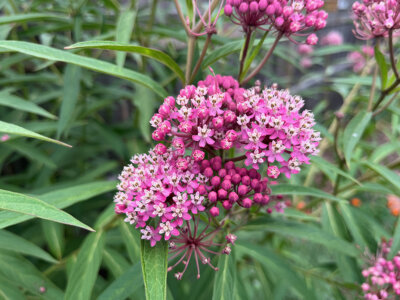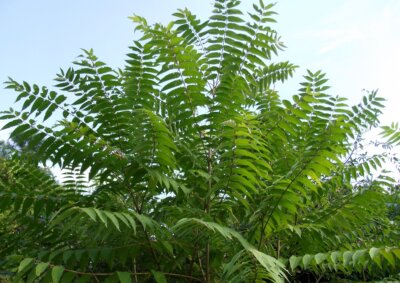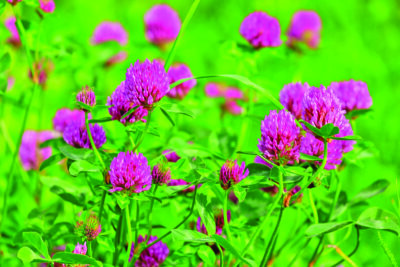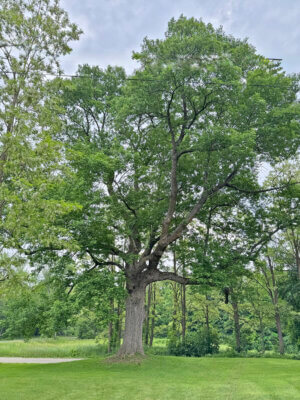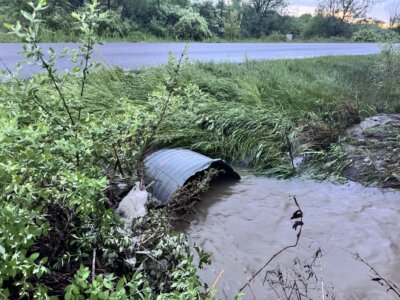Invasion of the nutrient-depleting jumping worms
You may have heard of jumping worms, sometimes referred to as “snake worms.” Worm castings that resemble coffee grounds on the soil’s surface are likely the first thing you’ll notice.
Jumping worms (Amynthas agrestis, Amynthas tokioensis and Metaphire hilgendorfi) pose a threat to home gardens, agriculture and woodland areas. Their presence disrupts the soil structure and chemistry, depletes nutrients in the soil and can result in loss of plant vigor or death.
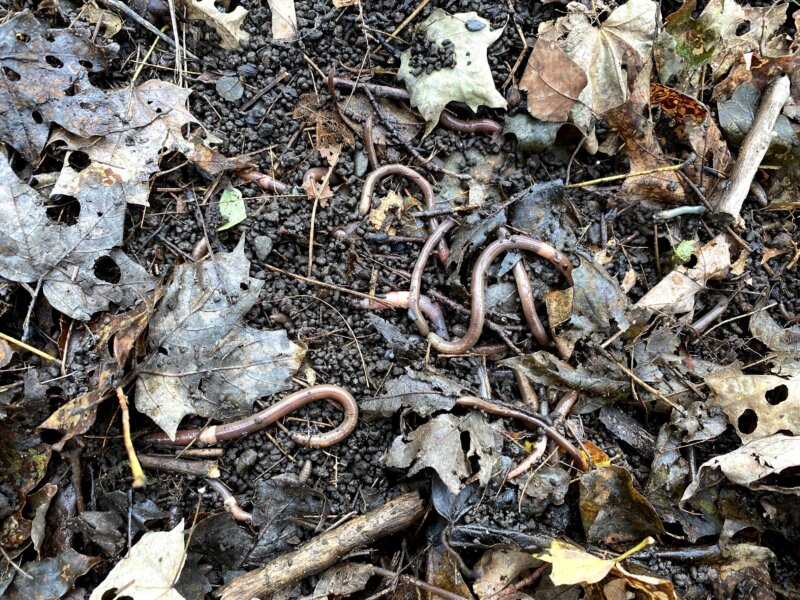
An adult jumping worm, with its distinctive clitellum, the pale, flat band entirely encircling its body, can grow up to 8 inches long and 1/5- to 1/3-inches wide.
Jumping worms exhibit violent thrashing when touched. An adult can be up to 8 inches long and 1/5- to 1/3-inches wide. Their most distinctive feature is the clitellum, the pale, flat band that entirely encircles its body. By contrast, the clitellum of common earthworms does not extend completely around the body and is darker and slightly raised.
Adult jumping worms don’t overwinter in Vermont, but their cocoons (eggs) do. Because they’re so small, it’s difficult to see them. The cocoons hatch in spring when temperatures are above 50 degrees Fahrenheit. Adults will be present in summer, producing more cocoons. As temperatures drop in the fall, adult worms die.
As we add plants, expand garden beds and tidy things up with fresh mulch, jumping worms, in their various stages of life, can arrive in soil, compost, mulch and manure delivered to our gardens. They also hide in the soil of potted plants. The cocoons can easily be moved on the soles of garden shoes.
Unfortunately, there are currently no approved pesticides or other treatment to prevent or eradicate jumping worms. Research is ongoing by Josef Gorres, a University of Vermont Department of Plant and Soil Science professor, and others around the U.S. Prevention is the most effective action, and there are several things you can do to limit their presence in your garden.
Any organic materials should be solarized prior to being introduced into the garden. To do so, make a pile 6-8 inches high of organic material on a clear plastic sheet, allowing plenty of uncovered plastic on the outer edges. Cover with another piece of plastic, pulling up the edges from the bottom and tucking the upper piece below the bottom to prevent worms from escaping.
Leave the enclosed pile in the sun for two-three days. The internal temperature needs to exceed 105 degrees Fahrenheit to kill the jumping worms and their cocoons. Materials purchased in plastic bags can be solarized right in the bags.
When ordering plants, shrubs and trees, consider ordering them bare root. If purchasing potted plants, jumping worms or cocoons may be in the soil. Even when purchasing plants at annual plant sales of local organizations where the plants are grown nearby, jumping worms and cocoons may be present.
To avoid introducing them into your home garden, remove the plant from its pot and wash its roots. Fill two buckets with water. Remove as much soil as possible, and then submerge the roots in the first bucket of water, gently swishing.
When most of the soil has been removed, inspect the roots for worms or cocoons. Rinse the roots in the second bucket to remove any remaining bits of soil. Repot in fresh soil that has been solarized.
Solarize any soil removed from incoming plants before adding it to your compost or garden. For more information on preventing jumping worms, see this website.
Growing from seed or taking cuttings to root are other options that will prevent including jumping worms when adding plants to your garden.
If you do find jumping worms in your yard, you can hand pick and destroy them by dropping them in a bucket of soapy water. While hand picking worms won’t eliminate the problem, it can reduce the number of adult worms present, which will in turn reduce the number of cocoons and future generations of jumping worms.
For more information on jumping worms, see the Vermont Invasives website.
(Deborah J. Benoit is a University of Vermont Extension master gardener from North Adams, Massachusetts, who is part of the Bennington County Chapter.)
Related Stories
Popular Stories
If you enjoy The Charlotte News, please consider making a donation. Your gift will help us produce more stories like this. The majority of our budget comes from charitable contributions. Your gift helps sustain The Charlotte News, keeping it a free service for everyone in town. Thank you.
Andrew Zehner, Board Chair



